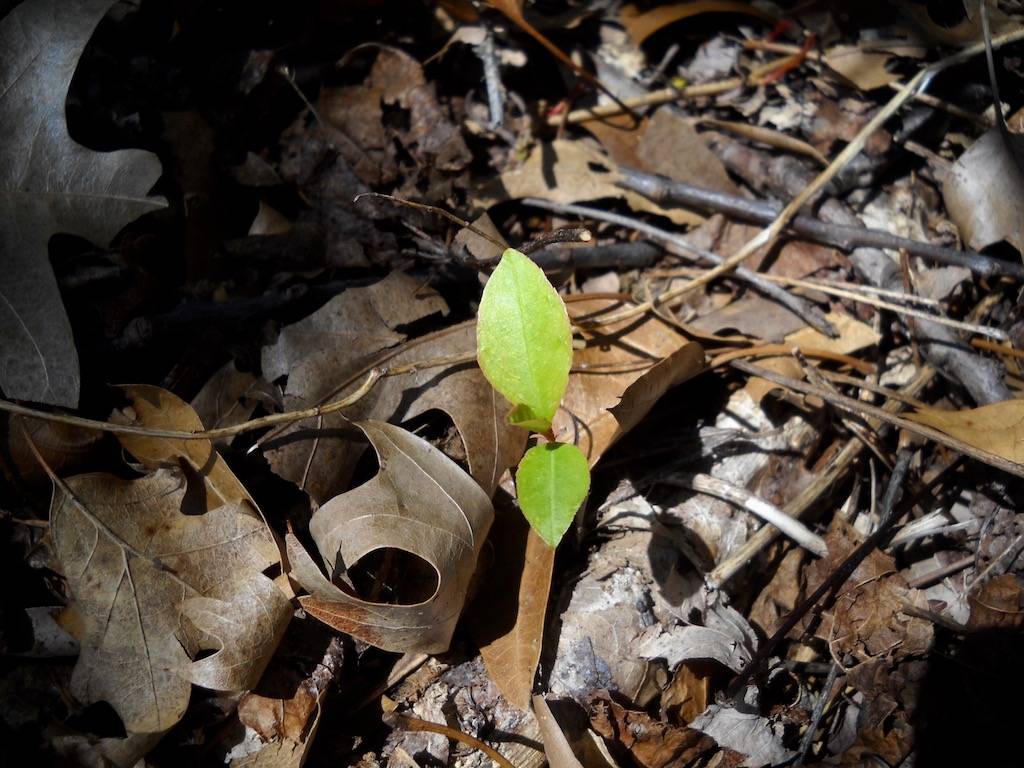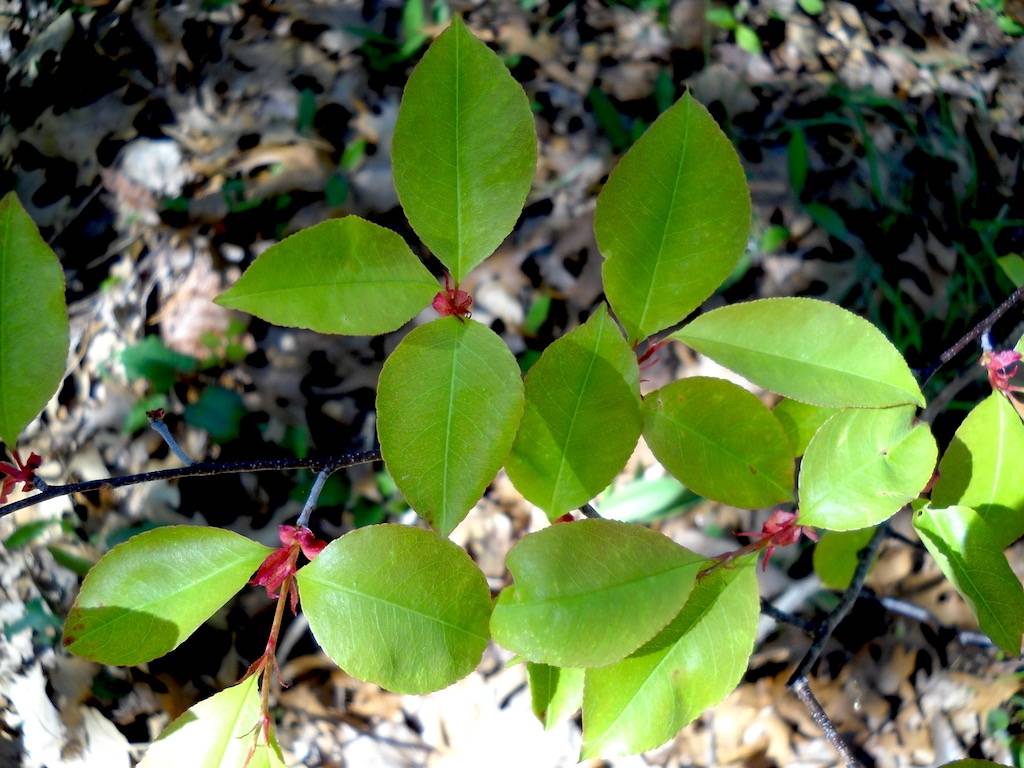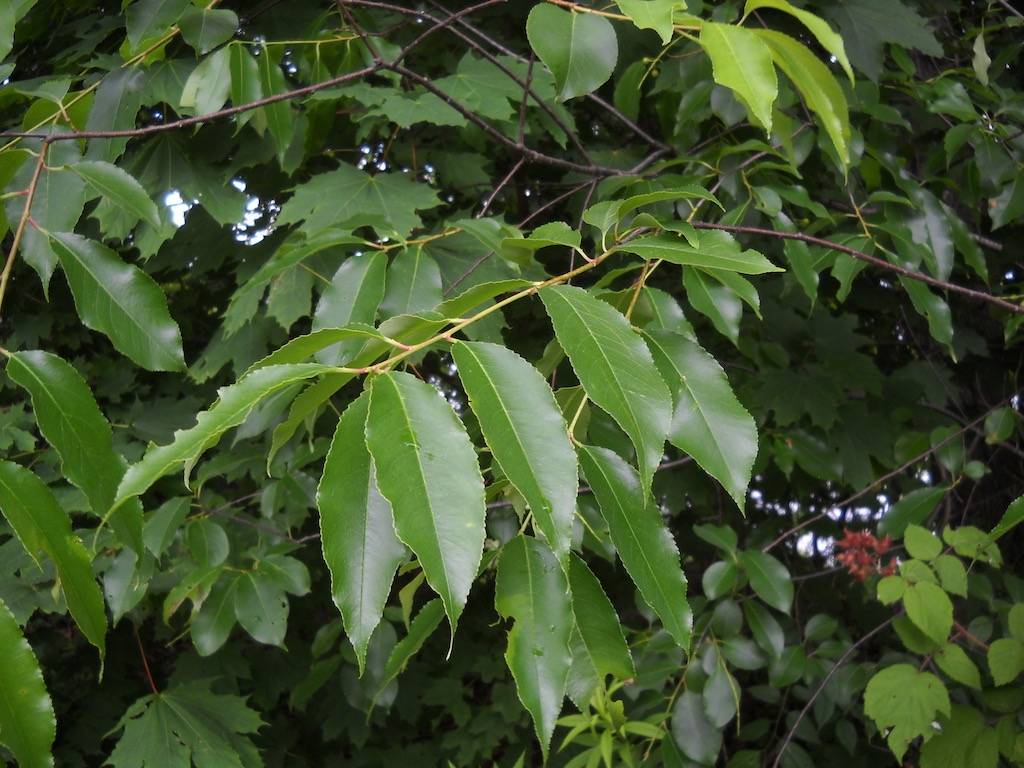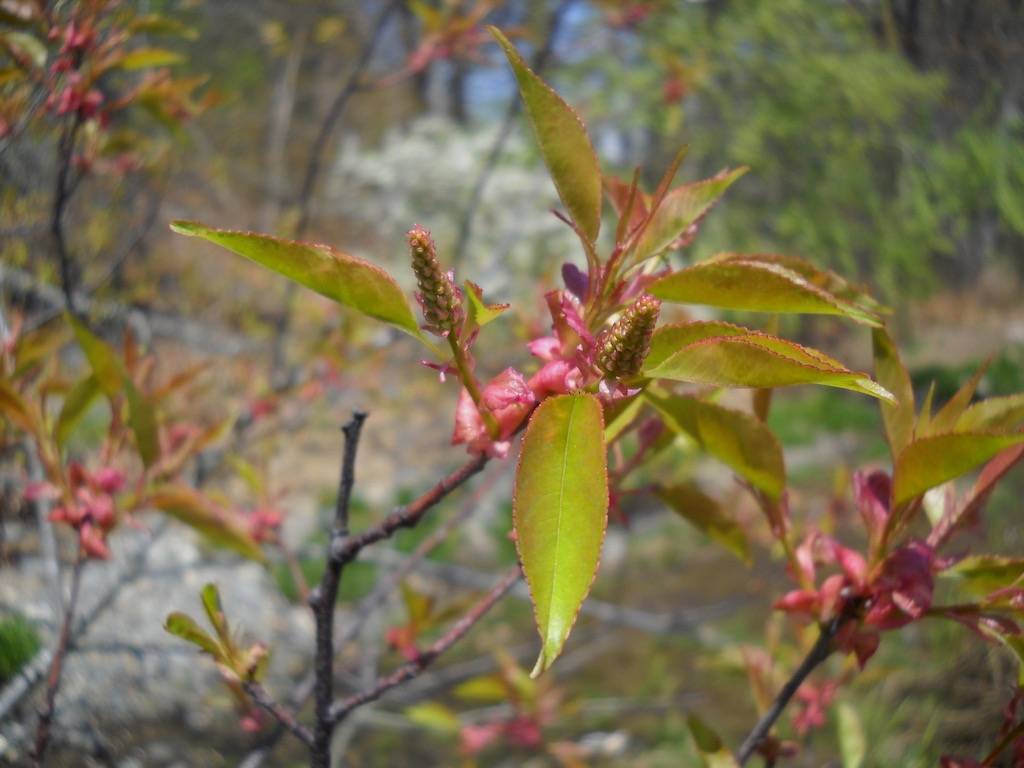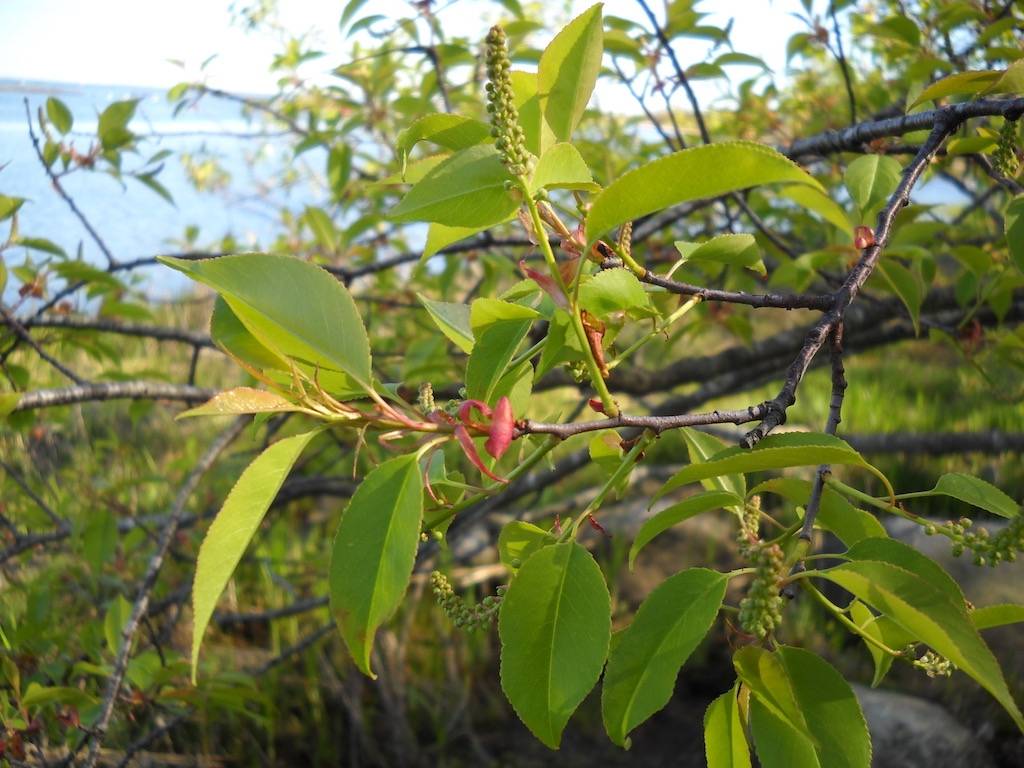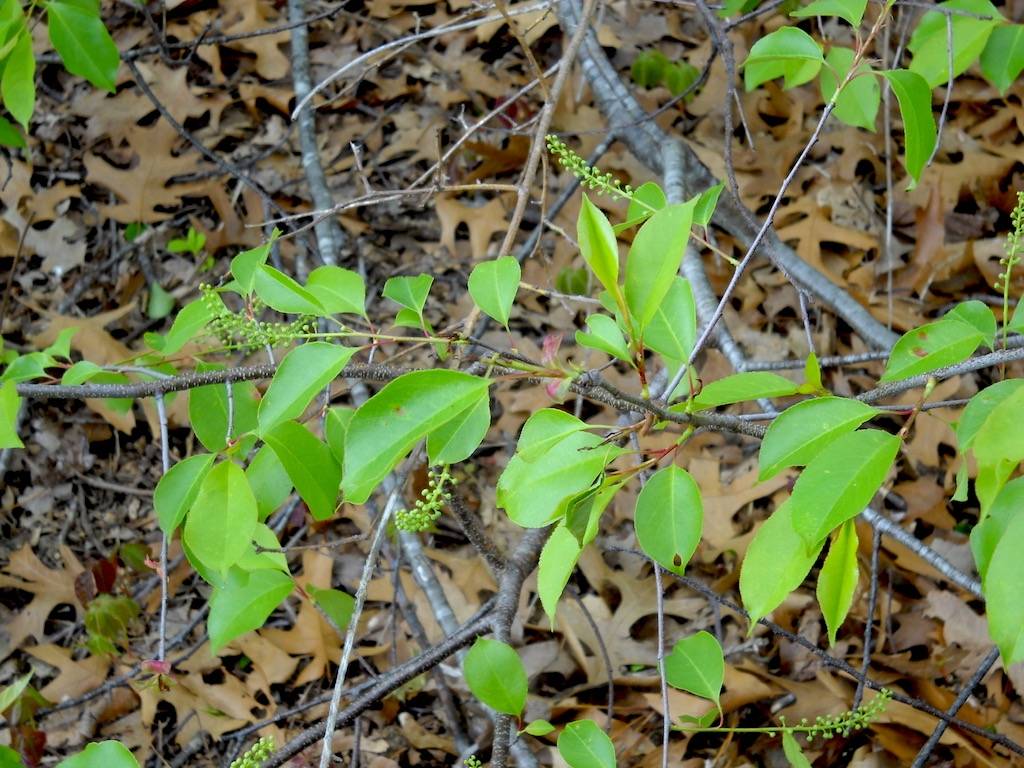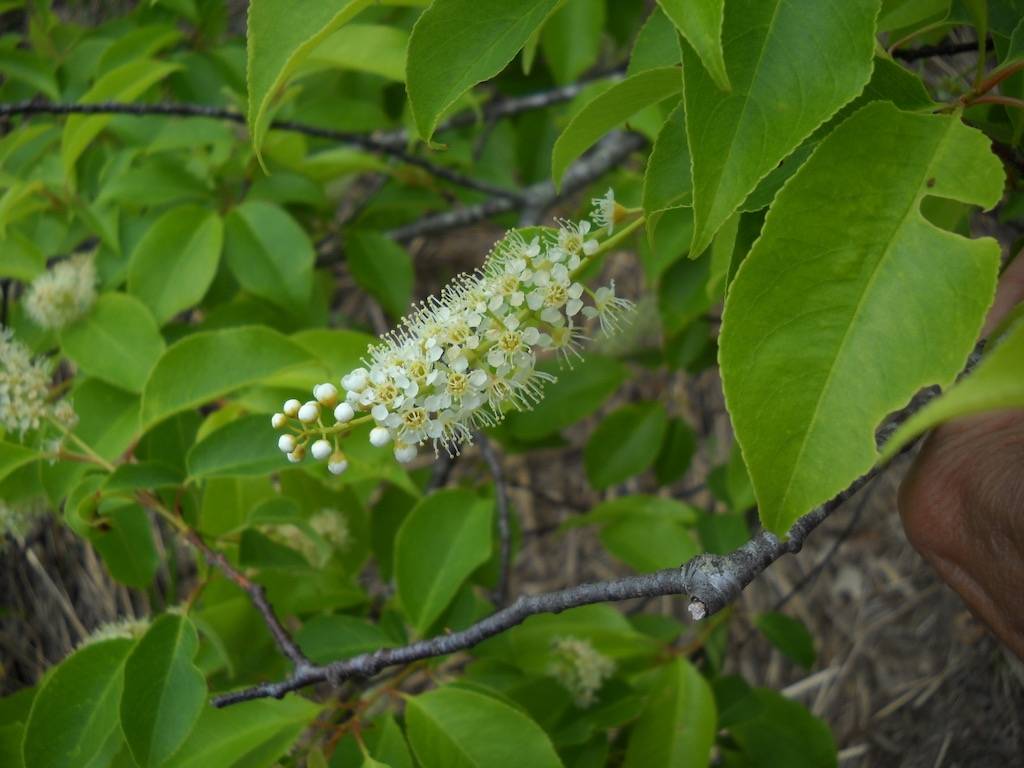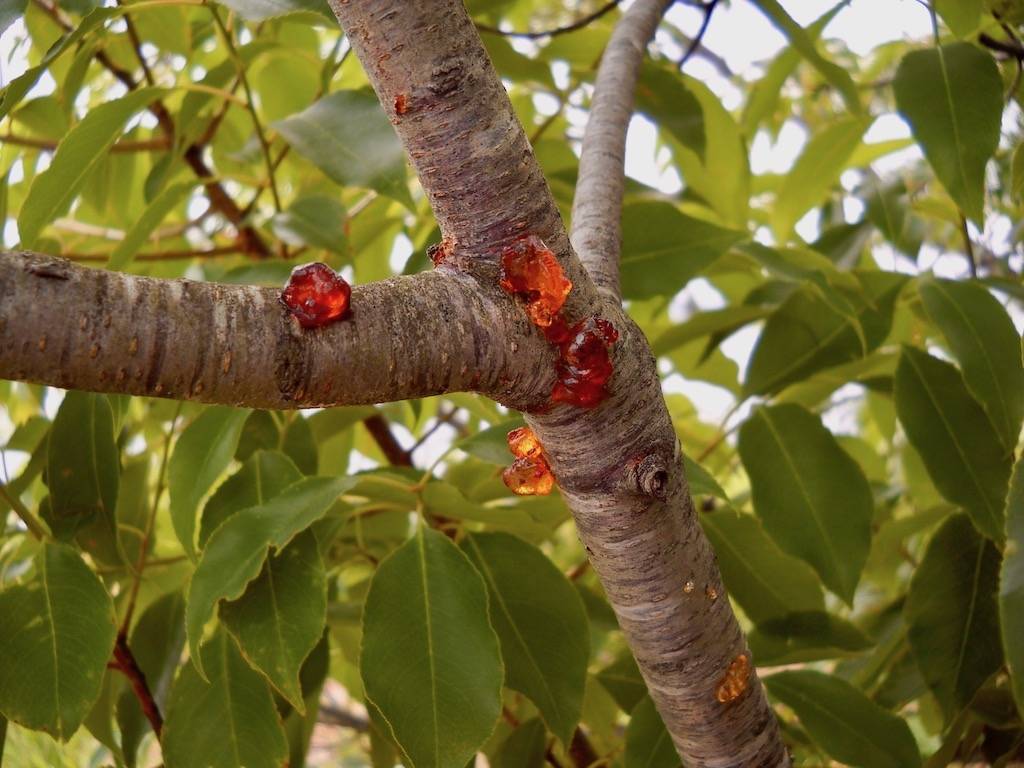black cherry
Black cherry is a widespread and common tree native to North and South America. It is fast growing and is considered to be a pioneer species. Unlike in other forested areas of Rhode Island where pines and oaks dominate, black cherry is a conspicuous component of the upland woods at Salter Grove. Large individuals form part of the canopy and are recognizable by a trunk that looks like it has been plastered with large burnt corn flakes.
Although they do not reach the stature of the renowned black cherry trees in Pennsylvania, their large size at Salter Grove probably came about in the same manner. The original forest cover of trees like white pine or other large trees was removed which allowed hardwood species like black cherry to thrive. Pictures from the dedication of Salter Grove Memorial Park in 1965 show a much more open environment than what we see today.
The bark and leaves of black cherry can be lethal if ingested in large amounts but medicinal in effect if taken in controlled quantities. Native Americans used preparations of the bark for colds, digestive complaints, hemorrhoids, and for easing the pain of childbirth. Early settlers prepared a cold infusion of dried young bark that worked equally well as either a mild sedative, or a tonic to improve digestion. The bark was also used in preparations to alleviate coughs, as well as indigestion. Native Americans dried the fruits for making pemmican.
Because of its rich color and smooth grain, black cherry wood is highly valued for making cabinetry, flooring, furniture, and veneer. It has been introduced to Europe where it has naturalized and in some areas it is even considered invasive.
For more information:
https://gobotany.nativeplanttrust.org/species/prunus/serotina/?pile=woody-angiosperms
http://dendro.cnre.vt.edu/dendrology/syllabus/factsheet.cfm?ID=66
https://extension.unh.edu/sites/default/files/migrated_unmanaged_files/Resource001720_Rep2400.pdf
https://www.minnesotawildflowers.info/tree/black-cherry
https://en.wikipedia.org/wiki/Prunus_serotina
https://wildadirondacks.org/trees-of-the-adirondacks-black-cherry-prunus-serotina.html
https://www.latimes.com/archives/la-xpm-1987-04-19-mn-1843-story.html
Coon, N. (1979). Using Plants for Healing. Rodale Press. p. 166.
Richardson, J. (1981). Wild edible plants of New England: A Field Guide: Including Poisonous Plants Often Encountered. DeLorme Pub. Co.

